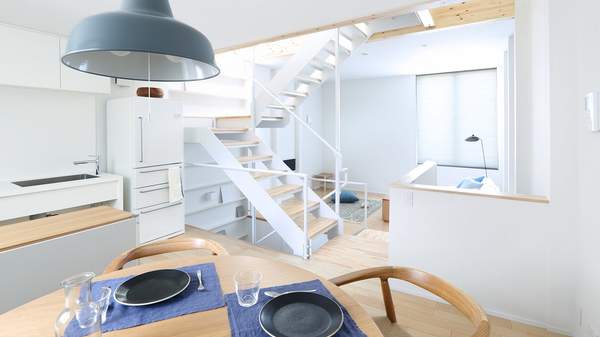Overview
Japanese minimalist homeware wizards Muji are moving into the architecture game with a series of new flat-pack houses that are giving us some serious FOMO and YOLO and all manner of acronym envy and inspiration. The best part? They’re economical in both price and space, giving hope to the current generation that perhaps we won’t always have to deal with landlords. Praise be to Muji!
Unfortunately, for now, they’re only available in Japan. However, Muji have recently opened stores in Melbourne and Sydney, so surely it’s only a matter of time before they ship em’ into our waiting arms. The houses are incredibly cute and, in classic Muji style, effortlessly minimalist. There are three designs to choose from, starting at US$150,000 for the ‘Wooden House’, US$160,000 for the ‘Window House’, and US$215,000 for the tall, Tokyo-inspired ‘Vertical House’. Incredibly reasonable.
The finishes are all white and blonde wood with elegant staircases and cosy nooks. And hey, it may be a bit cookie cutter but moving to Japan is surely better than selling all your internal organs to afford a house in Toorak or Double Bay right?
The real estate game is a-changin’ though and other retailers are starting to cater for the penny-saving generation (i.e. us ;_; ). Ikea are experimenting with movable walls (not set to hit the market for a few years but keep at it Ikea) and there are many innovative Aussie architecture firms experimenting with non-traditional and environmentally friendly ways to bring down the cost of building a new home.
Firms like iBuild (punny) and the slightly more upmarket modscape design, construct and deliver modular homes and extensions which cost much less than a contractor. And of course, there’s the shipping container community who do some spectacular things with discarded shipping containers.
Then there's the slightly earthy young buyers and the Earthship movement, slowly but surely making its way through all the red tape into the Australian construction landscape. Earthship structures use passive heating and cooling techniques, are constructed from indigenous or local materials (including old tyres and glass bottles) and feature an in-house sewerage treatment system, making them somewhat off the grid and cheap to run in the long term.
So have faith guys, there are houses in our future, don’t you worry. They just might not be the classic two-windows-one-door type most of us drew in preschool.
Via Domain.
